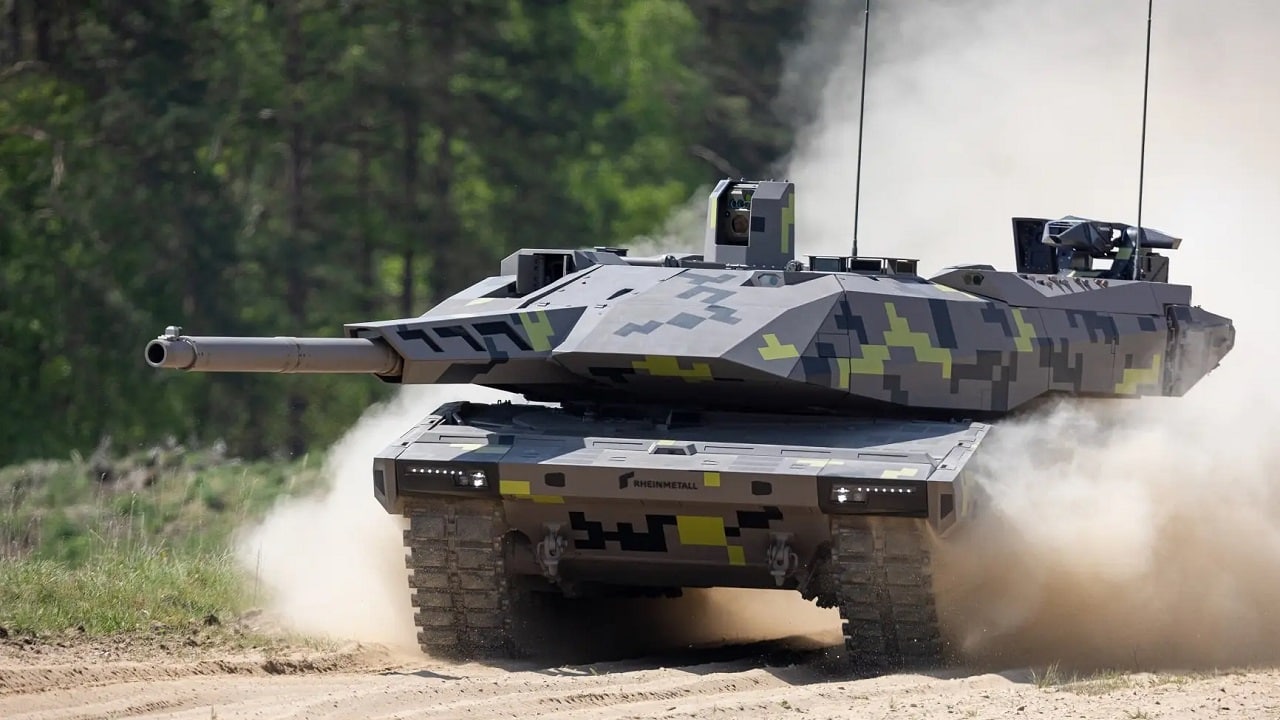The KF51, Explained – This week at the Eurosatory 2022 defense exhibition in Paris, France, German-based Rheinmetall unveiled its new KF51 “Panther” main battle tank (MBT). According to Rheinmetall, the Panther should be seen as the first of its kind, as it is a radically new main battle tank (MBT) “concept that is not constrained by yesterday’s technology.”
In addition, the German defense contractor noted that the KF51’s design has drawn from some of the latest technology from the ground up, and it promises to have the highest lethality on the battlefield, while combined with an integrated survivability concept. The Panther will feature modern connectivity via a fully digitized NGVA (NATO Generic Vehicle Architecture). This will enable both hunter-killer and killer-killer capabilities, and thus instantaneous target engagement – in the future also supported by artificial intelligence (AI).
Military analysts have suggested it could provide a transformative change on the modern battlefield.
“As a member of the European Main Ground Combat System (MGCS) consortium tasked with developing a next-generation MBT by 2035, Rheinmetall is evidently keen to demonstrate its capacity to conduct a holistic overhaul of current vehicle design philosophies,” said Tristan Sauer, land domain analyst at international analytics firm GlobalData.
“Indeed, by leveraging the open-systems approach advocated by the NGVA principle, Rheinmetall has designed the KF-51 Panther to provide transformative change on the modern battlefield through a ‘system-of-systems’ approach to platform development,” explained Sauer via an email.
The KF51 Panther has been designed for a crew of three, and it supports future force structures with reduced numbers of soldiers. Two crew stations are located in the chassis, including one dedicated to the driver as well as an optional station dedicated to a company commander, a drone operator or even a wingman pilot. Sensor and weapon control assignments can be passed between crew members instantly, and each workstation can hand over/take over tasks and roles from others with no reduction of functionality, the company explained.
As the turret and weapons control are also provided to the chassis-based work stations, future upgrades being planned now include unmanned turrets, and even remotely operated Panthers.
“Rheinmetall’s focus on the interoperability and modularity of critical subsystems has the potential to enhance lethality, situational awareness, survivability and mobility,” added Sauer. “The interconnected nature of the Panther’s crew stations allows each individual crew member to operate all of the vehicle critical functions independently, providing an additional level of redundancy which will facilitate multi-tasking while also allowing for the development of unmanned turrets and remotely piloted vehicles in the future.”
The Panther’s digital NGVA architecture will also enable the integration of additional sensors for detecting launch signatures. Its pre-shot detection capability can also be employed to recognize and neutralize threats at an early stage on the battlefield
“The Panther’s operational modularity also extends beyond the crew, as the integration of additional organic sensing capabilities such as EO/IR optics, loitering munitions and unmanned platforms will benefit not only the crew, but also the entire network of allied systems that Panther is connected to,” noted Sauer.
Rheinmetall has further suggested that the Panther is also the first of a new MBT family. As the tank was also developed to operate in a contested electromagnetic environment, it is fully hardened against cyber threats.
“As the war in Ukraine has demonstrated, armored vehicles operating without cross-domain support are at a heightened risk of destruction, thus the Panther’s purported situational awareness and networking capabilities are likely to be a major selling point,” Sauer continued. “Rheinmetall’s reveal of the KF-51 Panther attests to the fact that the standardization of vehicle systems architectures, though certainly a challenge for industry at first, is now beginning to produce results.”
Now a Senior Editor for 1945, Peter Suciu is a Michigan-based writer who has contributed to more than four dozen magazines, newspapers and websites. He regularly writes about military hardware, firearms history, cybersecurity and international affairs. Peter is also a Contributing Writer for Forbes.

